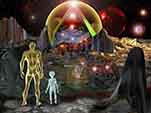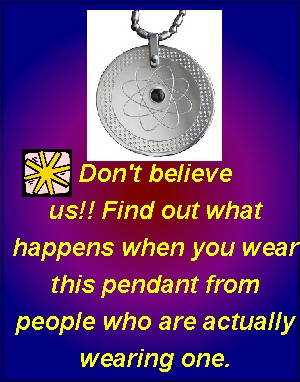Author:Joe Vialls
http://vialls.homestead.com/hypnosis1.html
Since the blatant but failed attempt on Martin Bryant's life in December 2000, the
mainstream media and other gun-control interest groups have gone into overdrive,
attempting to deflect public attention away from the core scientific evidence that
proves his innocence. The methods vary but the objective appears to remain the
same: use unacceptable hearsay testimony and inaccurate guesswork to overwhelm
the existing hard scientific evidence, thereby denying Martin Bryant the trial he has not
yet been allowed.
As any competent police detective will confirm, hearsay evidence and
guesswork are instant death to any serious inquiry, leading investigators and readers
into numerous blind alleys from which there is little chance of escape. For example,
suggesting the mass murder was "probably" planned to take place on the Isle of the
Dead near Port Arthur, or on board a ferry on its way to the Isle of the Dead, deflects
away from the reality that the principal crime scene was the Broad Arrow Café. At the
same time this approach indirectly implies a specific form of advance planning that
can never be proved in scientific terms. Great material for a "whodunit" crime novel
perhaps, but useless and confusing within the confines of a serious mass murder
investigation.
Attempts have also been made to "stretch" the time the shooter actually fired
inside the Broad Arrow Café, and the total number of rounds expended. This is a far
more damaging claim, leading as it does to the inevitable image of a slower clumsy
shooter, one that might more easily be compared with random killers like Kip Kinkel in
Springfield, or Michael McDermott in Wakefield.
Though known to be a proficient shooter, Michael McDermott used a total of
seventy-seven rounds to kill just seven of his work mates trapped in their office at
Edgewater Technology. As with Kip Kinkel in the school canteen in Springfield, most
of McDermott's rounds missed their targets completely, resulting in bullet and fragment
holes all over the room. Not one of McDermott's seven victims was hit in the head or
upper neck, unlike the first nineteen victims in the Broad Arrow Café during April 1996.
Each of the latter was coldly dispatched with an expert single shot to the head,
After the bodies at Springfield and Wakefield were removed, both crime scenes
bore all the hallmarks of a major military engagement: ejected cartridge cases by the
score, and dozens of expended whole bullets and fragments that missed their targets
buried in the walls, ceiling and furniture. Springfield and Wakefield were forensic gold
mines, littered with enough exhibits to keep the crime labs busy for months.
This was certainly not the case in the Broad Arrow Café at Port Arthur. As the
official forensic diagram compiled by the New South Wales Police scientific team
shows in great detail, there were only 29 ejected cartridge cases, and a total of seven
bullet fragments. We know that all 29 bullets hit their intended targets because we have
the post mortem results for the victims, and we also know that fragments from three of
those same bullets injured a further three victims, resulting in 32 dead or injured for
only 29 shots fired.
The forensic diagram also shows limited damage to the floor and furniture, but it
must be remembered this damage does not include any residual bullets, bullet
fragments or bone chippings. So far as the investigation is concerned, the damage
serves only to illustrate the likely course or direction of travel of a bullet, or bullet
fragment, or bone chipping, and cannot be meaningfully "added" to the seven
existing bullet fragments in order to provide a more dramatic expanded total. .
The fragments require further explanation. Due to the unusual mass and velocity
combination of the 5.56-mm NATO (.223 Remington) round at close range, bullets
do not stay intact when striking hard targets, as they would normally do in the case of
the old .303 Lee Enfield round of World War 2 fame. On contact with the hard bone
of a human skull for example, the old 150 grain .303 bullet would create an entry
wound, then use its mass [weight] and resulting inertia to continue through the skull
and punch a larger exit wound through the rear.
Though the .223 Remington round used at Port Arthur has the same overall kinetic
energy as a .303 Lee Enfield at the point of impact, it lacks the mass and inertia
needed to continue through hard bone because it only weighs 55 grains. The
massive kinetic energy expended at the point of impact with hard bone, causes the
little.223 Remington bullet to fragment, in turn frequently causing the skull to explode
due to a sudden increase in internal hydrostatic pressure. The result? Bullet
fragments and bone chips continuing on from the primary target to injure further
victims.
This ugly characteristic of the .223 Remington round at close range, has been
proved on hundreds of occasions during the last three months in Palestine. Children
hit in the shin or knee by identical rounds fired by Israeli soldiers and settlers,
invariably have their legs amputated, because the shattered mess of bullet fragments
muddled up with hundreds of bone chips, makes effective remedial surgery
impossible.
Where Port Arthur is concerned, remember that unlike the Hoddle Street and
other open-air murders, the mass murder in the Broad Arrow Café took place within
a completely confined space, thereby restricting residual evidence to the same
confined area. To prove this mass murder was the same as (or even vaguely similar
to) the random events at Springfield and Wakefield, would require at least two dozen
bullet holes and associated 100 -150 bullet fragments to validate the comparison.
There were none of these items, and because the mere seven fragments found in
the Broad Arrow most probably originated from the same three frag through-shots
that injured victims 30-32, the crime scene was almost spookily clean. This, shrieked
the lack of evidence, was the work of a man who never missed his targets. It may
have been this very lack of visible evidence that led to the Tasmanian Government
order for the premature destruction of the internal structure of the Broad Arrow Café.
Not to "hide evidence" as some have speculated, but rather to hide the more
damning total lack of evidence or artifacts: evidence and artifacts that would later be
required in court to validate the "lone nut" and thus "random" shooting.
Anyone trying to subtly deflect away from the harsh reality of the expert shooter in
the Broad Arrow, might imply that the thorough official forensic diagram was later
"altered" or "forged" to fit the evidence submitted in the Supreme Court of Tasmania.
This is not only an insult to the entire New South Wales Police scientific team, it is
also hopelessly irrational. Any attempt at forgery down the line would be aimed at
significantly increasing the "evidence" in order to enhance the illusion of a "lone nut"
random event. The New South Wales Police scientific team did not forge, alter, or
delete anything.
By generously placing its official forensic diagram in the public domain, the
scientific team has provided you the reader with the official means to prove the
Tasmanian Government's story of the day was, and remains, an impossible lie.
The alleged extended "total shooting time" in the Broad Arrow Café is easy to
rebut. The audio tracks of two amateur video cameras filming at the time of the
shooting accurately recorded the incredible speed of the shots, and were later
submitted to the Supreme Court of Tasmania as evidence. The author has copies of
these videos, both of which were subjected to extensive testing by audio experts
using sophisticated computer audio analytical programs. There is not the slightest
trace of forgery or editing breaks on either tape, both of which prove the astonishing
rate of fire of the expert combat shooter. at Port Arthur. There is not an amateur
shooter in the land who could get even close.
Alternative views on Port Arthur are encouraged, because it is the democratic
right of every individual to speak his or her mind on any subject. In this context it
matters not whether the speaker is a New South Wales farmer, a Victorian security
guard, or a Port Arthur survivor obliged to ride the harsh and emotional roller coaster
of extended psychiatric hypnosis in Melbourne, Victoria, at Tasmanian Government
expense. No matter who might decide to take the stand, he or she is entitled and
encouraged to speak independently on the matter.
The down side is that those who care about Australia and Australian national
security should be very careful with their selection of words, especially at this late
stage with the Federal and Tasmanian Governments known to be severely shaken by
the reality that their best efforts have failed to quash the Port Arthur "conspiracy". In
some cases the public might be tempted to question the underlying motives of those
who seek to mislead their audiences, and subtly deflect away from the known hard
scientific facts.
Remember. Collectively as Australians we allowed government to imprison an
intellectually impaired young man for a series of crimes he could not possibly have
committed. At the time we all stood by meekly and allowed this to happen while
raising not the slightest objection to Bryant's severe abuse while on remand in
Risdon Prison, nor to the fact that he should have been provided with a qualified
guardian to protect him from his own lawyers. It is time to forget personal ego trips.
Martin Bryant needs a trial and he needs it now, before someone somewhere has
time to arrange another "accident" in his lonely cell.
sangraal
N.B. I believe the scenario presented by Joe Vialls to be more
likely than that posited by LLR & EIR.






































